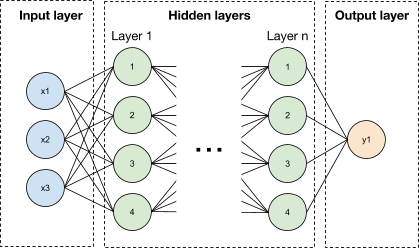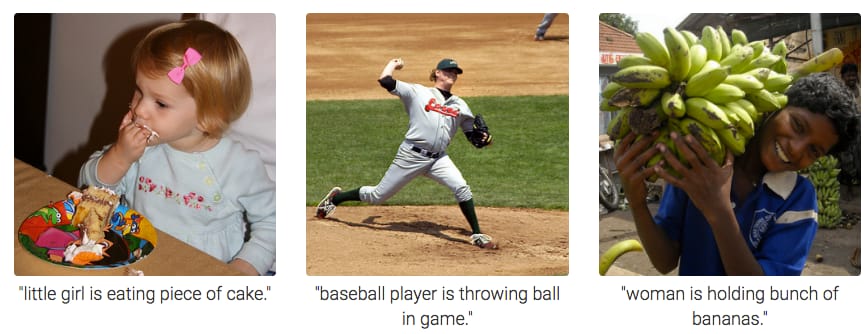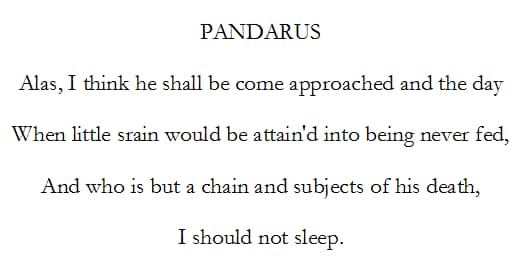
Deep learning the beautiful mind
The brain has an incredibly complex structure, and although many researchers have studied this structure, the inner workings of the human brain are still far from being fully understood [1]. We do know however that its complex structure allows the brain to perform rather impressive tasks and to learn and adapt over time. Humans, as proud owners of a brain, are therefore relatively good at tasks that might be complicated for computer programs, for example face recognition, object recognition, and other learning tasks.
Artificial neural networks
Perhaps the closest approximation of the inner biological workings of the human brain is the ongoing research in the field of artificial neural networks (ANNs). ANNs are a simplified version of the interconnected network of neurons in the human brain. Their function, to propagate electrical signals (or impulses) in such a way that the correct action is performed, is analogue to the way the human brain operates. The neurons in an ANN can adjust and propagate input signals in order to collectively arrive at an output (see Fig. 1, in which x1, x2, and x3 are input neurons, y1 is the output neuron, and the other neurons are the hidden neurons, which can be distributed over a large number of layers (n)).

Schematic representation of a very basic deep neural network with n hidden layers. The x-neurons serve as the input to the hidden neurons (the numbered neurons), which propagate the signal to the output neuron (y1 in this case). Neurons from subsequent layers are connected, with their outputs functioning as the inputs for the next layer of Neurons. The training process for a neural network determines how each neuron should weigh its inputs.
Although this technique has been around since the 1950s, recently there has been a renewed interest in ANNs. With computing power and computer cluster infrastructures becoming a commodity, and because of several important developments in the field of ANNs (see, for instance [2][3][4][5]), these artificial brain structures have become capable of producing incredible results.
Deep learning
The term deep learning has been coined to refer to the training process of effective, complex multilayer ANNs, also called deep neural networks [3]. Deep neural networks have been applied to solve various problems in a plethora of fields. In general, these networks work especially well if the problem being solved has a non-linear or hierarchical nature. Next, we describe three typical examples of deep learning applications.
As a first example, ANNs have been used to automatically classify objects in an image and to automatically generate a highly accurate caption for the image (see Fig. 2). In this example, firstly the neural network is used to determine the contents of an image, that is, to recognize the objects. The algorithm identifies the individual objects present in the scene. It does so by recognizing increasingly complex image descriptions in subsequent layers in the underlying neural network. First, edges are detected. From these edges, silhouettes are formed. From these silhouettes, shapes and objects are recognized. In the sample of Figure 2 [6], the highest level objects are the girl and the cake. Secondly, the ANN maps a descriptive caption to these objects. For this, a new ANN is constructed, taking the output of the object-identifying ANN as input and creating a sentence in natural language.

Figure 2. Automatic object classification in images and image captioning using a deep neural network (Image courtesy of http://cs.stanford.edu/people/karpathy/deepimagesent/)
The second impressive example of the power of deep learning is the generation of text, where a neural network is used to generate new text based on a corpus of other texts. This technique has previously been used to generate phrases in the style of Shakespeare or Wikipedia articles (see Figure 3) [7][8]. In order to be able to do so, the algorithm is first trained on a large number of texts (for example from Shakespeare). The trained network is used to iteratively determine the chance of the next word or character in the sentence, based on its previously predicted words and characters.
A last example is the use of deep learning in some mobile phone keyboards, where deep learning is used to predict and suggest words the user might type next [9], based on what the user has typed previously. Besides these examples, in the past year, many major tech company (e.g., Google, Facebook, and Apple) has touted their use of deep learning to improve their services (e.g., face recognition in images, speech recognition in digital personal assistants, etc.).
Deep learning applied in the field of psychopathology?
In summary, deep learning has found its way to automate some of the tasks that previously only humans could do. However, in the field of medicine, the use of deep learning is still limited. We expect to see many more practical applications of deep learning in the coming years, including some in the medical field. After all, the main requirements for deep learning (i.e., complex problems and large amounts of input data), are easily met in numerous branches of medicine. The value deep learning could add is tremendous, as was already demonstrated by the IBM Watson [10]. The IBM Watson applies deep learning and other machine learning techniques to provide advice in, for example, medical decision making, and has already been applied successfully in several cases [11][12][13]. The significance of Watson is that it not only matches but even exceeds human performance.
While the use of deep learning in medicine as a whole is limited at best, the use of deep learning in psychopathology is (as of yet) nonexistent. We anticipate that this will change in the near future. In current research, as part of a collaboration between the University of Groningen and University Medical Center Groningen, we are investigating the predictive qualities of various machine learning methods, among which deep learning is one, for prognosis in the field of mental health (see also the blog post by Peter de Jonge, to be published on September 14, 2016). The goal of this research is to determine which of these methods can best be used to predict adverse courses in depression, based solely on self-report data that is routinely retrieved in a clinical setting. We hope that these efforts, together with those of others, will further help unravel the mysteries of our beautiful minds.
We hope that these efforts, together with those of others, will further help unravel the mysteries of our beautiful minds.
Relevant links and publications
[2] http://jmlr.org/papers/v15/srivastava14a.html
[4] http://deeplearning.cs.cmu.edu/pdfs/Hochreiter97_lstm.pdf
[5] http://jmlr.org/proceedings/papers/v9/glorot10a/glorot10a.pdf
[6] http://cs.stanford.edu/people/karpathy/cvpr2015.pdf
[7] http://www.cs.utoronto.ca/~ilya/pubs/2011/LANG-RNN.pdf
[8] http://karpathy.github.io/2015/05/21/rnn-effectiveness
[9] https://blog.swiftkey.com/neural-networks-a-meaningful-leap-for-mobile-typing/
[10] http://www.ibm.com/watson/
[11] https://www.technologyreview.com/s/539226/ibm-pushes-deep-learning-with-a-watson-upgrade
[12 http://www3.nhk.or.jp/nhkworld/en/news/20160804_29/?__prclt=j3haGNBZ
[13] http://www.wired.co.uk/article/ibm-watson-medical-doctor
NOTE: Image at the top retreived from http://www.publicdomainpictures.net/pictures/10000/velka/book-tunnel-11287160032j7BO.jpg



